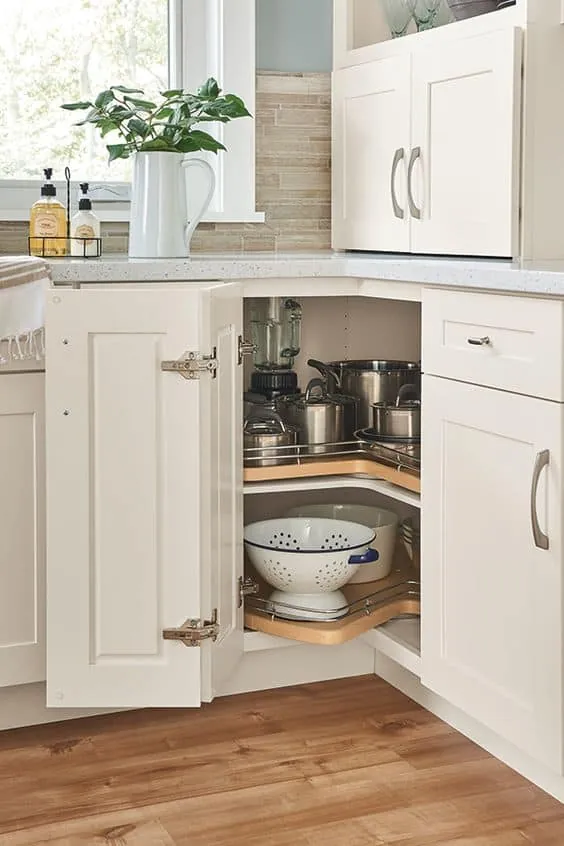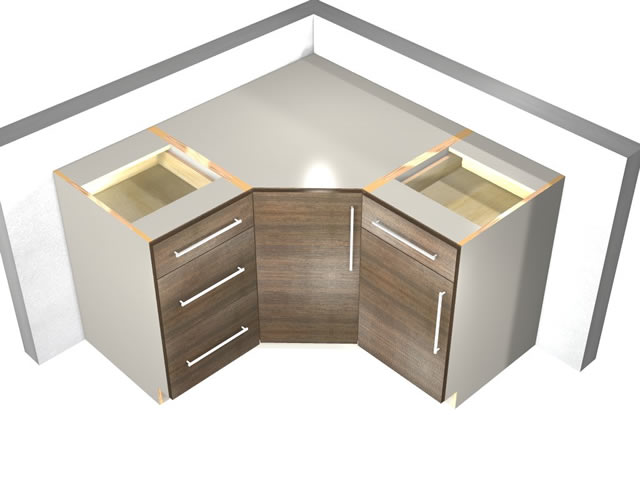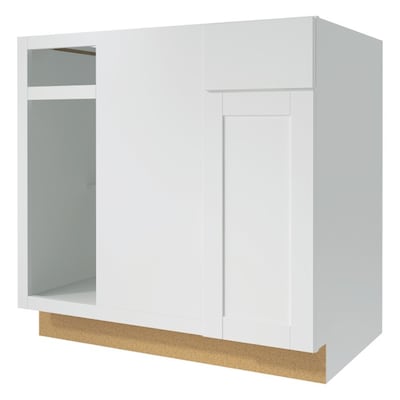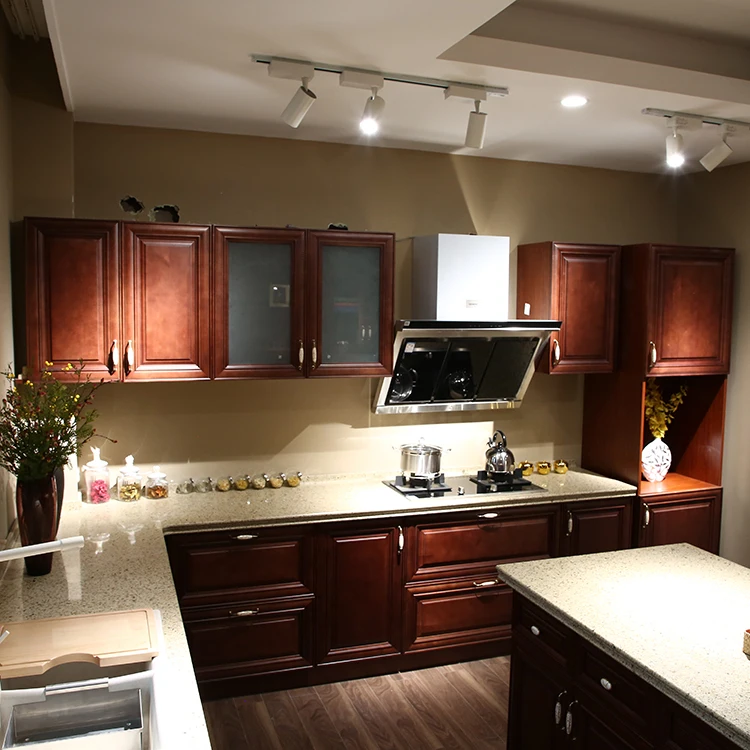The Evolution of Modular Kitchen Corner Cabinets
Modular kitchens have revolutionized the way we think about and design our cooking spaces. One of the key components that has seen significant innovation is the corner cabinet. Corner cabinets have traditionally been underutilized or challenging spaces in kitchen design. However, with the advent of modular kitchen designs, these awkward spaces have been transformed into functional, accessible, and aesthetically pleasing storage solutions.

The Traditional Corner Cabinet Challenge
Traditional corner cabinets often pose accessibility issues. These spaces are notoriously difficult to reach, making them prone to becoming cluttered and underutilized. The classic L-shaped corner cabinet, for instance, might have ample space, but reaching the items stored at the back can be a frustrating experience. As a result, these cabinets frequently end up as storage for items that are seldom used, leading to inefficient use of kitchen space.
To address these challenges, early solutions like the lazy Susan were introduced. The lazy Susan—a rotating tray—allowed for better access to items stored in corner cabinets. While this was an improvement, it still had limitations, such as difficulty in handling larger items and the potential for items to fall off the tray. As kitchen design evolved, so did the need for more innovative and practical solutions for corner cabinets.

The Advent of Modular Solutions
The rise of modular kitchens brought about a significant shift in corner cabinet design. Modular kitchen systems are designed to maximize efficiency and functionality, which includes making the best use of every available space, including corners. Modern modular corner cabinets are designed with accessibility and storage optimization in mind, offering various configurations and mechanisms to enhance usability.
These innovative designs include pull-out racks, swing-out shelves, and carousel units, which allow for full utilization of corner spaces without compromising accessibility. These solutions ensure that even the deepest corners of the cabinet are easily reachable, making it possible to store and retrieve items with minimal effort. The introduction of modular corner cabinets has significantly improved the functionality and efficiency of kitchen storage solutions.

Aesthetic Integration
Beyond functionality, modular corner cabinets are also designed to seamlessly integrate with the overall aesthetic of the kitchen. These cabinets come in a variety of materials, finishes, and styles, ensuring that they complement the kitchen’s design. Whether you prefer a modern, minimalist look or a more traditional, rustic charm, there are modular corner cabinet options to match your taste.
The ability to customize the appearance of corner cabinets means that they no longer have to be a hidden or awkward part of the kitchen. Instead, they can become a stylish feature that enhances the overall look of the space. The integration of sleek hardware, soft-close mechanisms, and high-quality materials ensures that these cabinets not only function well but also add to the kitchen’s visual appeal.

Types of Modular Kitchen Corner Cabinets
There are several types of modular kitchen corner cabinets, each designed to address specific needs and preferences. Understanding the different options available can help you choose the right solution for your kitchen.
Lazy Susan Cabinets
The lazy Susan remains a popular choice for corner cabinets, but with modern improvements. Contemporary lazy Susan cabinets often feature enhanced mechanisms, such as adjustable shelves and sturdier trays, to accommodate a wider range of items and improve durability. Some designs even include kidney-shaped trays that optimize the use of space and reduce the risk of items falling off.
These cabinets are ideal for storing frequently used items like pots, pans, and small appliances. The rotating shelves make it easy to access items without having to reach deep into the cabinet. Additionally, modern lazy Susan cabinets can be customized with different tray sizes and configurations to suit your storage needs.
Swing-Out Shelves
Swing-out shelves are another innovative solution for corner cabinets. These shelves are designed to swing out of the cabinet, bringing the stored items directly to you. This mechanism ensures that even the items stored at the back of the cabinet are easily accessible. Swing-out shelves are typically mounted on sturdy metal frames and can hold a substantial amount of weight.
This type of corner cabinet is perfect for storing heavier items like cookware and appliances. The smooth operation of the swing-out shelves makes it easy to retrieve items without bending or stretching. Additionally, these cabinets can be customized with different shelf heights and configurations to maximize storage efficiency.

Pull-Out Racks
Pull-out racks are designed to slide out of the cabinet, providing easy access to items stored in the corner. These racks often feature multiple tiers or baskets, allowing for organized storage of various items. Pull-out racks are especially useful for storing smaller items like spices, condiments, and kitchen utensils, as they prevent these items from getting lost in the depths of the cabinet.
The pull-out mechanism ensures that all items are visible and within reach, making it easier to keep your kitchen organized. Many pull-out racks also feature soft-close mechanisms, which prevent the racks from slamming shut and causing damage. This type of corner cabinet is ideal for those who prefer a highly organized and easily accessible storage solution.
Magic Corner Cabinets
Magic corner cabinets are a sophisticated solution that maximizes the use of corner space. These cabinets feature a series of shelves or baskets that are connected to a mechanism that pulls the entire unit out when the cabinet door is opened. This design allows for full access to all items stored in the corner cabinet, making it one of the most efficient storage solutions available.
Magic corner cabinets are perfect for storing a wide range of items, from cookware to pantry staples. The smooth operation of the mechanism ensures that all items are easily accessible, and the sturdy construction can support a significant amount of weight. These cabinets are a great choice for those who want to make the most of their corner space without sacrificing accessibility.

Benefits of Modular Kitchen Corner Cabinets
Modular kitchen corner cabinets offer several benefits that make them an attractive choice for modern kitchens. These benefits extend beyond just storage and accessibility, contributing to the overall functionality and aesthetics of the kitchen.
Maximized Storage Space
One of the primary benefits of modular kitchen corner cabinets is the maximization of storage space. Traditional corner cabinets often result in wasted space, but modular designs ensure that every inch of the corner is utilized. Whether through pull-out racks, swing-out shelves, or rotating trays, these cabinets provide ample storage space for a variety of kitchen items.
This maximization of space is especially beneficial in smaller kitchens where every bit of storage counts. By effectively utilizing corner spaces, modular corner cabinets help to free up other areas of the kitchen, making the entire space more efficient and organized. This can lead to a more streamlined and enjoyable cooking experience.
Improved Accessibility
Accessibility is another significant advantage of modular kitchen corner cabinets. Traditional corner cabinets can be difficult to access, often requiring you to bend, stretch, or kneel to reach items stored at the back. Modular designs eliminate these challenges by bringing the stored items directly to you through innovative mechanisms like swing-out shelves and pull-out racks.
This improved accessibility makes it easier to find and retrieve items, reducing the time and effort required to cook and clean. It also helps to keep the kitchen organized, as items are more likely to be returned to their proper place when they are easily accessible. For those with mobility issues or physical limitations, these cabinets can significantly enhance the usability of the kitchen.

Aesthetic Appeal
Modular kitchen corner cabinets are designed to seamlessly integrate with the overall aesthetic of the kitchen. With a variety of materials, finishes, and styles available, these cabinets can complement any kitchen design. Whether you prefer a modern, minimalist look or a more traditional, rustic style, there are modular corner cabinet options to match your preferences.
The ability to customize the appearance of these cabinets means that they can become a stylish feature in your kitchen. High-quality materials, sleek hardware, and smooth mechanisms contribute to a polished and professional look. This aesthetic appeal enhances the overall value and enjoyment of the kitchen space.
Enhanced Functionality
The enhanced functionality of modular kitchen corner cabinets is another key benefit. These cabinets are designed with the needs of the modern cook in mind, offering features like adjustable shelves, soft-close mechanisms, and sturdy construction. These features contribute to a more efficient and enjoyable cooking experience.
For example, adjustable shelves allow you to customize the cabinet to fit your specific storage needs, whether you need to store tall pots or small pantry items. Soft-close mechanisms prevent the cabinet doors and shelves from slamming shut, reducing noise and preventing damage. The sturdy construction ensures that these cabinets can hold a significant amount of weight, providing reliable storage for all your kitchen essentials.

Customizing Modular Kitchen Corner Cabinets
Customizing your modular kitchen corner cabinets can help you make the most of your kitchen space and tailor the cabinets to your specific needs and preferences. Here are some key considerations and options for customization.
Choosing the Right Material
The material you choose for your modular kitchen corner cabinets can have a significant impact on their appearance, durability, and maintenance requirements. Common materials include wood, laminate, metal, and glass. Each material has its own advantages and considerations.
Wood is a popular choice for its natural beauty and durability. It can be stained or painted to match your kitchen’s decor and can be customized with various finishes. However, wood requires regular maintenance to prevent damage from moisture and heat.
Laminate is an affordable and low-maintenance option that comes in a wide range of colors and patterns. It is resistant to stains and easy to clean, making it a practical choice for busy kitchens. However, laminate is not as durable as wood and can be susceptible to chipping or peeling over time.
Metal and glass are modern materials that can add a sleek and contemporary look to your kitchen. Metal is highly durable and resistant to heat and moisture, while glass can create a light and airy feel. Both materials require minimal maintenance but can be more expensive than wood or laminate.
Selecting the Mechanism
The mechanism you choose for your modular kitchen corner cabinets can greatly affect their functionality and ease of use. Consider your storage needs and preferences when selecting a mechanism.
Lazy Susan cabinets are ideal for storing frequently used items and offer easy access through rotating trays. Swing-out shelves and pull-out racks provide full access to items stored in the corner, making them suitable for storing a variety of kitchen essentials. Magic corner cabinets maximize the use of corner space through a sophisticated pull-out mechanism, making them a highly efficient storage solution.

Adding Custom Features
Custom features can enhance the functionality and convenience of your modular kitchen corner cabinets. Consider adding features like soft-close mechanisms, adjustable shelves, and integrated lighting.
Soft-close mechanisms prevent the cabinet doors and shelves from slamming shut, reducing noise and preventing damage. Adjustable shelves allow you to customize the cabinet to fit your specific storage needs, whether you need to store tall pots or small pantry items. Integrated lighting can improve visibility and make it easier to find and retrieve items stored in the corner cabinet.
Coordinating with Kitchen Design
Coordinating your modular kitchen corner cabinets with the overall design of your kitchen is essential for achieving a cohesive and harmonious look. Consider factors like color, finish, and hardware when customizing your cabinets.
Choose colors and finishes that complement your kitchen’s decor. For example, if you have a modern kitchen with sleek, stainless steel appliances, consider choosing cabinets with a matching metallic finish. If you have a traditional kitchen with warm wood tones, choose cabinets with a complementary wood finish.
Hardware, such as handles and knobs, can also play a significant role in the overall look of your cabinets. Choose hardware that matches the style of your kitchen, whether it’s modern, traditional, or transitional. Coordinating the hardware with other elements in the kitchen, such as faucets and light fixtures, can create a cohesive and polished look.
Common Mistakes to Avoid
When designing and installing modular kitchen corner cabinets, avoiding common mistakes can help ensure a successful and functional result.
Overlooking Accessibility
One of the biggest mistakes is overlooking accessibility when designing corner cabinets. It’s essential to choose mechanisms and features that make it easy to access items stored in the corner. Avoid designs that require you to bend, stretch, or kneel to reach items, as this can lead to frustration and inefficiency.
Ignoring the Importance of Quality
Choosing low-quality materials and hardware can result in cabinets that are prone to damage and wear. Investing in high-quality materials and mechanisms ensures that your cabinets will be durable, functional, and aesthetically pleasing for years to come. Avoid cutting corners on quality to save money, as this can lead to higher costs in the long run due to repairs and replacements.
Failing to Maximize Space
Failing to maximize the available space in corner cabinets is a common mistake. Choose designs and mechanisms that make full use of the corner space, such as swing-out shelves, pull-out racks, and magic corner cabinets. Avoid leaving large areas of the cabinet unused, as this can lead to wasted space and reduced storage capacity.
Not Considering the Overall Kitchen Layout
Not considering the overall kitchen layout when designing corner cabinets can lead to a disjointed and inefficient space. Ensure that your corner cabinets complement the rest of your kitchen’s design and layout. Consider factors like the placement of appliances, the flow of movement, and the accessibility of other storage areas when designing your corner cabinets.

What are the best mechanisms for modular kitchen corner cabinets?
The best mechanisms for modular kitchen corner cabinets include lazy Susans, swing-out shelves, pull-out racks, and magic corner cabinets. Each mechanism offers different advantages and is suitable for various storage needs. Lazy Susans are ideal for frequently used items, swing-out shelves provide full access to stored items, pull-out racks are great for organizing smaller items, and magic corner cabinets maximize the use of corner space.
How can I ensure my corner cabinets are easily accessible?
To ensure your corner cabinets are easily accessible, choose mechanisms that bring stored items directly to you, such as swing-out shelves or pull-out racks. Consider the height and reach of the shelves and ensure they are within easy reach. Integrated lighting can also improve visibility and make it easier to find and retrieve items.
What materials are best for modular kitchen corner cabinets?
The best materials for modular kitchen corner cabinets depend on your preferences for durability, maintenance, and aesthetics. Wood offers natural beauty and durability but requires regular maintenance. Laminate is affordable and low-maintenance but less durable than wood. Metal and glass provide a sleek, modern look and require minimal maintenance but can be more expensive.
How do I maintain modular kitchen corner cabinets?
Maintenance for modular kitchen corner cabinets depends on the material and mechanism. Regular cleaning with mild soap and water is usually sufficient for most materials. Avoid abrasive cleaners and scrubbing pads that can damage the surface. For wood cabinets, periodic polishing and sealing can help maintain their appearance. Ensure that mechanisms like swing-out shelves and pull-out racks are kept clean and lubricated for smooth operation.
Can modular corner cabinets be customized to fit my kitchen?
Yes, modular corner cabinets can be customized to fit your kitchen. You can choose from a variety of materials, finishes, and mechanisms to suit your needs and preferences. Custom features like soft-close mechanisms, adjustable shelves, and integrated lighting can further enhance the functionality and convenience of your corner cabinets. Coordinating the cabinets with your kitchen’s overall design ensures a cohesive and harmonious look.

Related Posts: